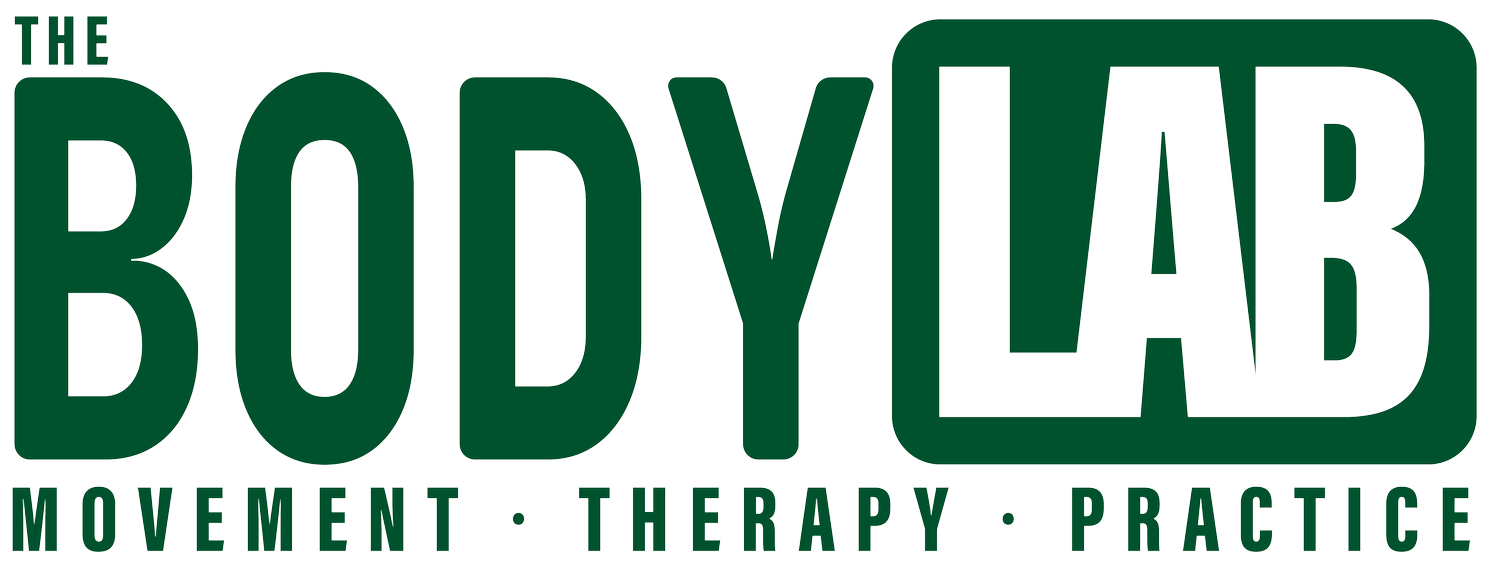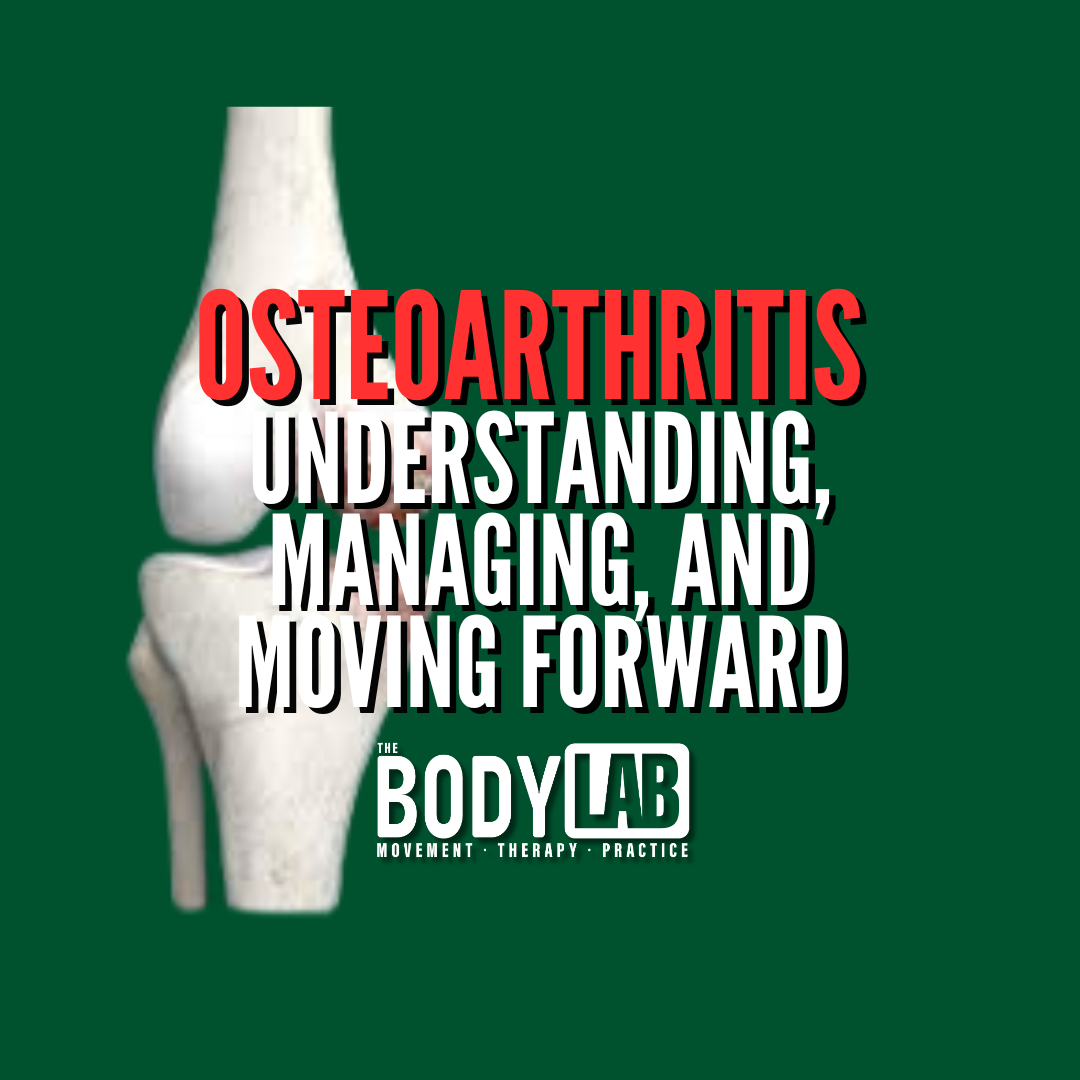Osteoarthritis: Understanding, Managing, and Moving Forward
Osteoarthritis (OA) is one of the most common joint disorders, yet it remains poorly understood and often managed even more poorly. It is characterized by the gradual breakdown of cartilage, the tissue that cushions and protects the ends of bones in our joints. This cartilage plays a crucial role in absorbing the forces of weight-bearing and allowing near frictionless movement between bones. When it deteriorates, pain, stiffness, and loss of mobility follow.
Inflammation is a significant factor in OA progression. Knees with more swelling and inflammation tend to be more painful than those that remain relatively “dry” (Felson et al., 2016). While cartilage breakdown can occur for multiple reasons—including genetics, past injuries, or surgery—cartilage does have some ability to repair itself. However, when its natural repair mechanisms are disrupted, progressive degeneration occurs.
Why X-rays Don’t Tell the Whole Story
One of the biggest misconceptions about osteoarthritis is that its severity is determined by X-rays. However, imaging alone does not define how much OA will affect a person’s life.
Some people with “bone-on-bone” arthritis continue to run pain-free, while others with milder osteoarthritis struggle with daily activities.
This is why staying active is key. Contrary to outdated advice, telling someone with OA to stop moving, stop exercising, or even stop running can be detrimental to joint health (Hunter & Bierma-Zeinstra, 2019). In fact, remaining active helps maintain mobility, preserves function, and often reduces pain over time.
The Link Between Metabolic Health and Osteoarthritis
OA is not just a wear-and-tear disease. It is now recognized as having metabolic and inflammatory components. People with obesity, type 2 diabetes, prediabetes, and fatty liver disease often experience higher levels of systemic inflammation, which contributes to more severe OA symptoms and faster disease progression (Robinson et al., 2019).
Research suggests that inflammatory mediators from metabolic dysfunction enter the joint fluid, triggering an immune response and worsening cartilage degradation (Zhuo et al., 2021). This inflammatory process not only increases pain but also accelerates joint deterioration.
Managing Osteoarthritis: What Works and What Doesn’t
1. Keep Moving – Exercise and Strength Matter
It may seem counterintuitive, but movement is one of the best treatments for osteoarthritis. Studies consistently show that structured exercise programs reduce pain and improve function (Fransen et al., 2015).
Walking, swimming, cycling, strength training, and mobility work all help maintain joint function.
Strength training helps stabilise joints and protect cartilage.
Mobility drills reduce stiffness and improve range of motion.
2. Weight Management and GLP-1 Medications
Losing excess weight significantly reduces stress on joints and improves symptoms. However, pain reduction can occur even before significant weight loss happens (Apolzan et al., 2022).
A recent study on GLP-1 receptor agonists (such as Semaglutide and Tirzepatide) showed that these medications improve pain scores in OA patients with obesity (Cox et al., 2023). Interestingly, these improvements occurred before dramatic weight loss, suggesting that GLP-1 medications may have direct anti-inflammatory effects on joints (Kum et al., 2023).
However, a large-scale study also found that GLP-1 medications may increase the risk of arthritis in some patients (Nature, 2024). This suggests that while these medications may help some individuals, they are not a universal solution.
3. Nutrition and Systemic Inflammation
What you eat affects joint health. Diets high in ultra-processed foods, refined sugars, and inflammatory oils can worsen OA.
Omega-3 fatty acids (found in fish and flaxseeds) have anti-inflammatory properties that may help reduce joint pain.
A Mediterranean-style diet—rich in whole foods, vegetables, and lean proteins—has been linked to lower systemic inflammation (Dreher, 2018).
Reducing sugar intake can help control metabolic dysfunction and decrease inflammatory markers.
4. Manual Therapy and Movement Coaching
Hands-on therapy, such as joint mobilisation, acupuncture, and soft tissue work, can help reduce stiffness and improve mobility.
Acupuncture has been shown to reduce knee OA pain and improve function (Vas et al., 2016).
Biomechanics-based movement coaching can improve gait mechanics and joint loading to reduce stress on affected joints.
Final Thoughts: Joints Are Not Fragile
Many people fear movement because they are told their joints are “worn out.” But joints are not as fragile as you might think. Even after arthritis has developed, our joints will treat us better if we treat our whole body better.
Instead of avoiding activity, the goal should be to maintain mobility, improve strength, and reduce inflammation through a combination of movement, weight management, and lifestyle changes.
The healthier and more active you remain, the longer you are likely to keep your natural joint.
How I Can Help
At The Body Lab, I specialise in helping people move pain-free through a holistic, science-backed approach to movement therapy, biomechanics, and pain management. My focus is on long-term solutions rather than quick fixes, empowering you to take control of your joint health.
✅ Gait & Biomechanics Assessments – Analysing how you move to pinpoint imbalances contributing to pain.
✅ Manual Therapy & Acupuncture – Hands-on techniques to improve circulation, relieve stiffness, and support joint health.
✅ Strength & Mobility Programs – Targeted exercises to rebuild strength, restore movement patterns, and protect your joints.
✅ Telehealth Consultations – Remote support to guide you through personalised movement strategies.
✅ Workshops & Online Education – Learn how to manage pain, improve mobility, and prevent further joint degeneration.
Your joints are designed to move. The right approach can help you move better, feel stronger, and reduce pain—without relying on unnecessary surgeries or medications.
If you’re struggling with osteoarthritis or joint pain and want to stay active while protecting your joints, let’s work together to create a plan that fits your body’s needs.
Book an appointment at The Body Lab today and take the first step towards better movement, better health, and a better quality of life.
References• Apolzan, J.W., Myers, C.A. & Martin, C.K. (2022). ‘GLP-1 receptor agonists and their effects on joint pain: A metabolic perspective’, Obesity Reviews, 23(8), pp. 1–9.• Cox, L.G., Ahn, J. & McAlindon, T. (2023). ‘Efficacy of GLP-1 receptor agonists in osteoarthritis pain reduction: A randomized controlled trial’, Annals of the Rheumatic Diseases, 82(9), pp. 1218–1225.• Dreher, M.L. (2018). The Mediterranean Diet: Nutritional Benefits and Practical Applications. Springer.• Felson, D.T., Neogi, T. & Zhang, Y. (2016). ‘Inflammation and its role in OA pain’, Arthritis Research & Therapy, 18(1), pp. 1–9.• Fransen, M., McConnell, S., Hernandez-Molina, G. & Reichenbach, S. (2015). ‘Exercise for osteoarthritis of the knee: Cochrane review update’, British Journal of Sports Medicine, 49(24), pp. 1554–1557.• Hunter, D.J. & Bierma-Zeinstra, S. (2019). ‘Osteoarthritis’, The Lancet, 393(10182), pp. 1745–1759.• Kum, W.T., Teoh, K.H. & Lee, C.H. (2023). ‘The unexpected effects of GLP-1 receptor agonists on arthritis progression’, Journal of Endocrinology and Metabolism, 65(4), pp. 354–367.• Robinson, W.H., Lepus, C.M., Wang, Q. et al. (2019). ‘Metabolic regulation of inflammation in osteoarthritis’, Nature Reviews Rheumatology, 15(5), pp. 303–314.• Vas, J., Santos-Rey, K., Navarro-Pablo, R. et al. (2016). ‘Acupuncture for osteoarthritis of the knee: A systematic review’, Journal of Acupuncture and Meridian Studies, 9(6), pp. 251–261.• Zhuo, Q., Yang, W., Chen, J. & Wang, Y. (2021). ‘Metabolic syndrome meets osteoarthritis’, Nature Reviews Rheumatology, 17(3), pp. 183–194.
